Your Guide to Living Walls
- June 5, 2019
- 10 min
Eco-Friendly Building
The movement toward sustainability and eco-friendly building materials is rapidly changing the industries of architecture and construction. In a recent World Green Building Trends report, a survey of building owners found that 57% planned to make a majority of their products "green" by 2021. This percentage is sure to sprout over time. There are many ways to build sustainably, and one of the most popular methods is by going green – literally. Including living plants in a design is a simple and efficient way to be environmentally friendly while providing long-term benefits for all involved. Continue reading to learn more about living walls.
Recently, many experts have been rethinking the direction of traditional greenery. Architects and designers are now using vertical gardens to harness the benefits of plant life in a space-saving way. You can see these "living wall" trellis systems as standalone fencing or dividers, as facades attached to building exteriors, and in any number of versatile applications.
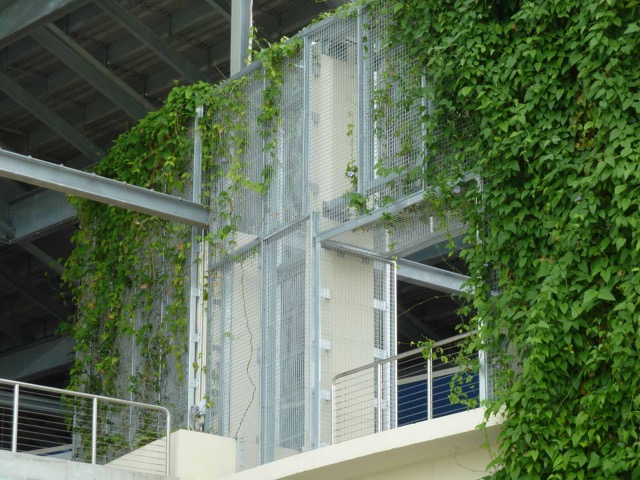
Why Design with Green Elements?
Despite the popularity of the sustainability movement, you may still be asking, “What are the advantages of green building?” The good news is that builders, inhabitants, and the environment benefit greatly from utilizing organic materials in design. Here are just a few reasons for the movement's bloom.
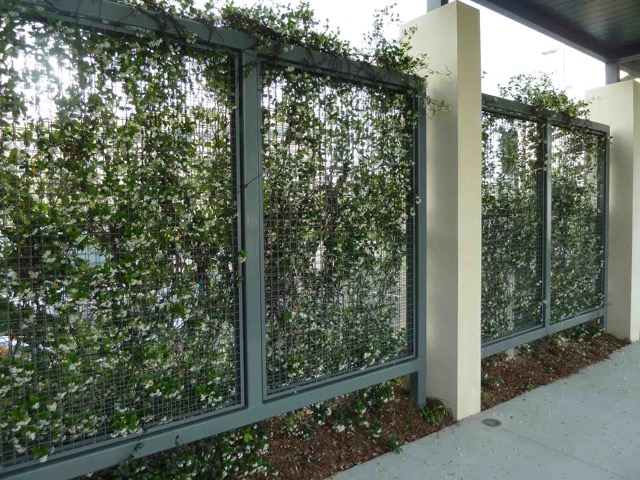
1. Visual Appeal
benefits. In an increasingly urban world, concrete jungles can lack color and liveliness. Including a bright spot of green among city structures is a popular way to revitalize facades and outdoor areas. Furthermore, using plant walls as dividers or fencing can add privacy in a way that feels natural, rather than restraining.
2. Conserve Energy
Unlike concrete, which absorbs sunlight, plants reflect solar energy. When used as facades, living screens assist in maintaining a cool building exterior. As the amount of heat in outer walls is reduced, a more temperate internal climate is preserved – establishing a natural cooling process. This system, coupled with the natural shade that plant walls provide, allows buildings to rely less on air conditioning. Therefore, the facility reduces the energy employed to control internal temperatures.
3. Improve Air Quality
Plants are natural air purifiers due to their ability to absorb carbon dioxide and release oxygen. By incorporating greenery in bustling areas, we drastically reduce the excess of carbon dioxide in our cities and replace it with fresher, cleaner air. In addition to carbon dioxide, plants can also lessen the amount of several other toxins in the air. Living walls absorb pollutants such as dust, debris, and other harmful substances that have been increasing with recent urbanization.
4. Reduce Noise Pollution
Although it is one of the lesser-known pollutants, noise pollution is a significant concern in metropolitan areas across the globe. This phenomenon is defined as “regular exposure to elevated sound levels that may lead to adverse effects in human or other living organisms.” Exposure to noise pollution can cause dangerous health problems, including hearing loss, sleep disturbances, and hypertension (which can lead to other cardiovascular issues). One of the most effective solutions to reduce this pollution is the use of vertical gardens on the side of buildings. Walls of foliage absorb sound waves and block them from reaching the inhabitants of the structures they surround.
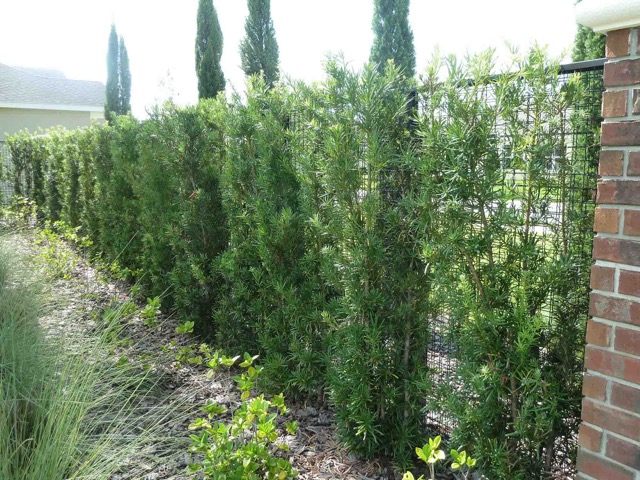
What Living Wall is Right for Me?
There are many factors to keep in mind when considering vertical garden options, so how do you determine which trellis system is right for your application? Listed below are a few features that are worth considering.
1. Bridge Wires
For increased strength and to give room for plants to grow, some trellis options include two separate layers of Wire Mesh. A bridge wire is a horizontal, zig-zagged wire that is alternately welded to both the front and back layers. This wire adds structure to the trellis, preventing the layers from collapsing inward or being pulled apart as a result of powerful vine growth. Trellis systems like ECO-MESH® that include bridge wires maintain appropriate spacing between front and back panels, ensuring ultimate stability.
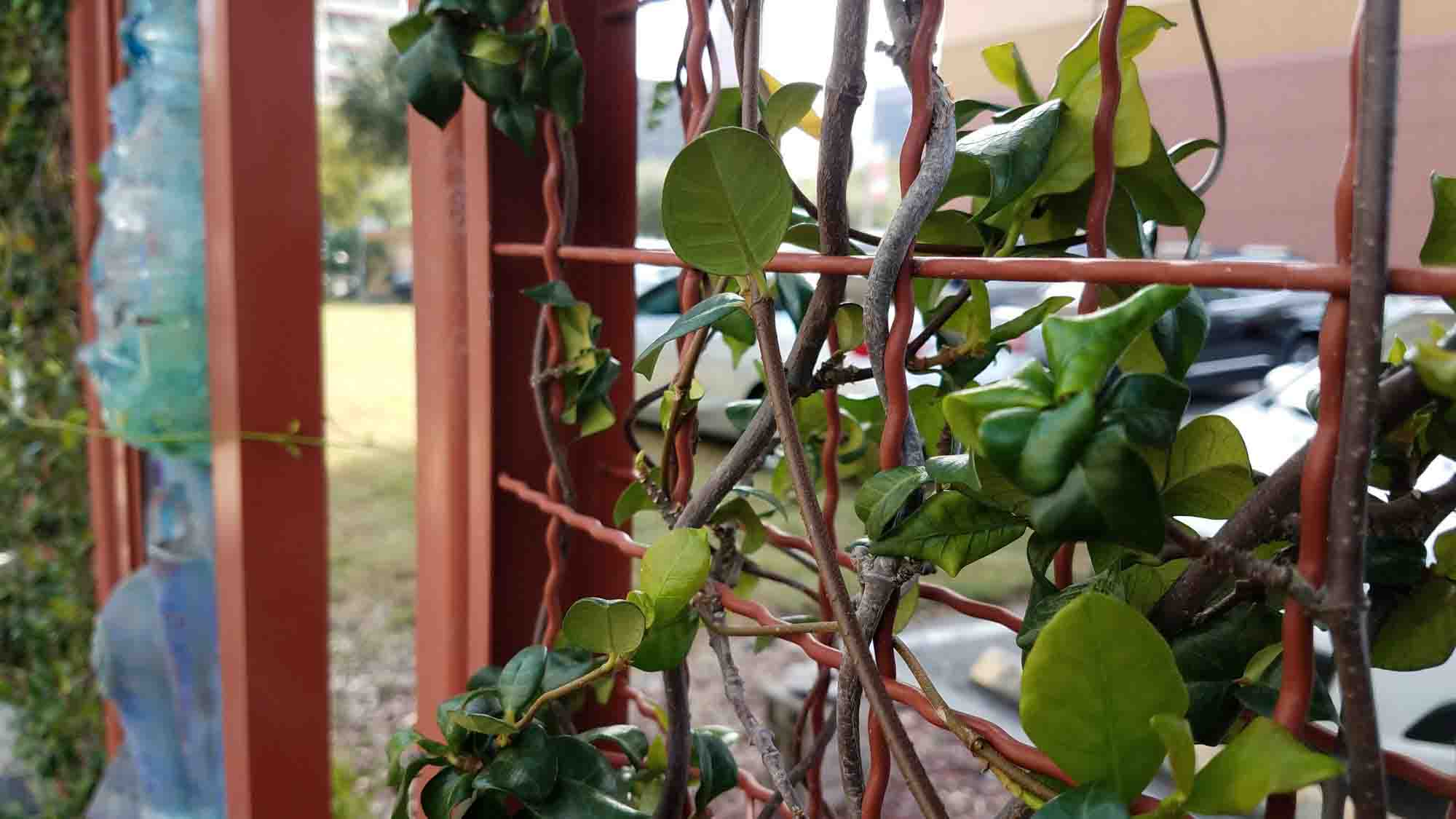
2. Woven Wires
In the construction of trellis or wire containment systems, wires can either be welded or woven together. But which one provides the ideal environment for growing greenery? As plants mature, strong vines can exert a large amount of force on their surrounding structures. With a welded construction, this force can be powerful enough to snap wires at welded intersections. On the other hand, woven mesh is flexible enough to adjust for an incrementally increasing vine load. Greenery may instead shift the woven openings, allowing the Wire Mesh to adapt to the plant’s growing shape. To learn more about the differences between woven and welded Wire Mesh, please read this post.
3. Wire Diameter
Just as growing vines can exert significant force on the bonds of a trellis system, they can also put a large amount of weight on the wires themselves. For this reason, it is essential that the wires that make up a living wall framework are thick enough to support maturing plants. Trellis wires with a minimum diameter of 0.135 inches (10 Gauge) have the highest chance of withstanding the strength of blooming greenery.
4. LEED Certification
When going green, one of the greatest motivators for architects, designers, and construction specialists is LEED Certification. While including plant life is a good start, it will not always be enough to validate your build as “green” according to LEED standards. One way to score even higher is by selecting a trellis system that is constructed using materials and finishes that are recycled and otherwise environmentally friendly.
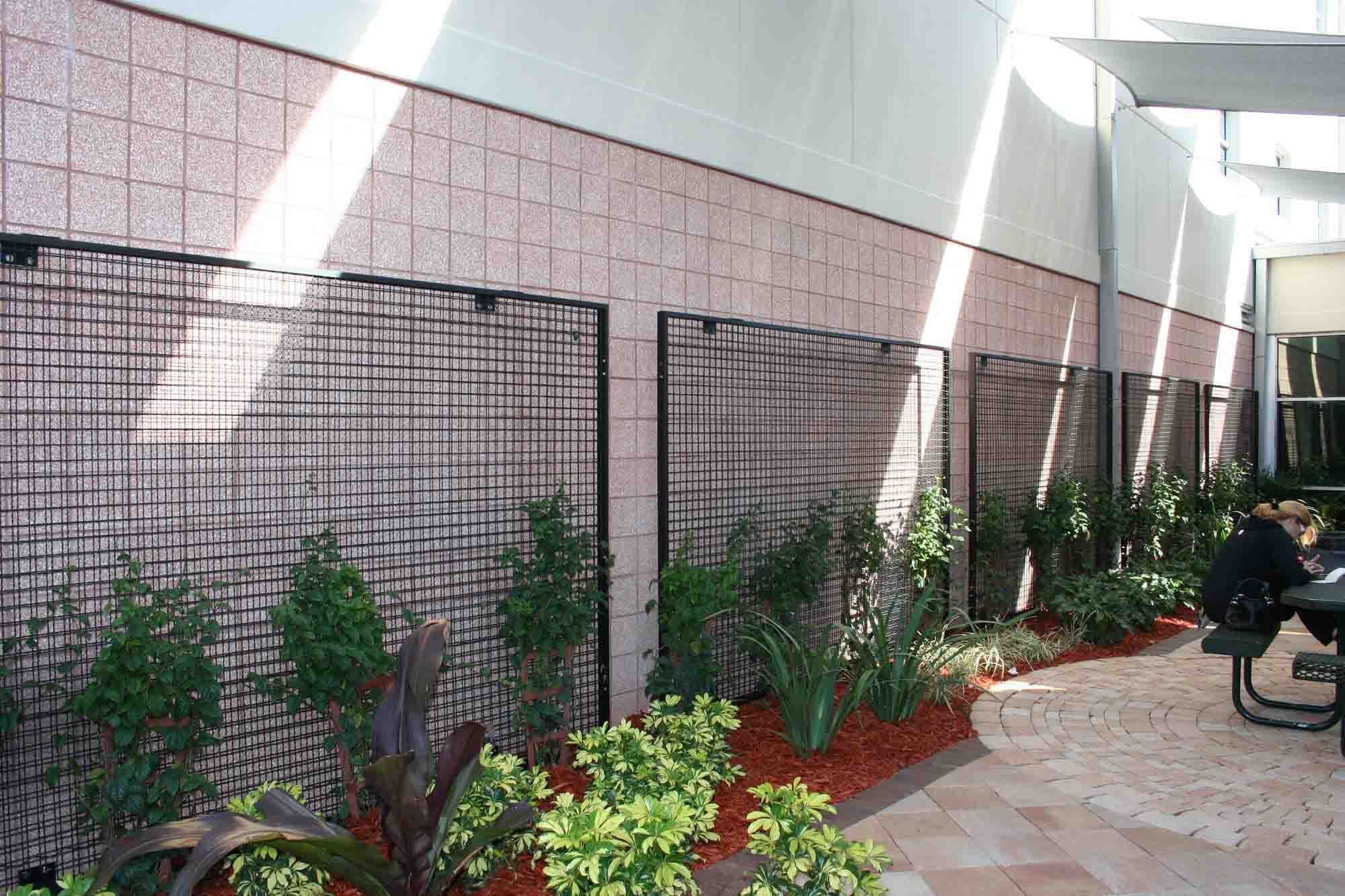
A Living Wall Solution for Your Eco-Friendly Building
We hope you feel inspired to "go green" yourself, and we trust you’ve found this trellis guide informative. If you would like to learn about which McNICHOLS products are right for your living wall solution, we invite you to browse our ECO-MESH® catalog. To do our part for the sustainability movement, we provide a modular framework grid that embraces and fosters organic environments. With heavy, woven intercrimp wires, ECO-MESH® supports plants as they thrive, resulting in a lush and beautiful green design. Our goal is to make "going green" as easy as possible for you, and that includes using LEED-friendly recycled materials that are ready to install--brackets and hardware included.
If you have questions or would like to learn more about how our ECO-MESH® line can help you achieve your sustainability goals, one of our knowledgeable associates is Inspired to Serve® at 855.318.8791, [email protected], or via Live Chat on mcnichols.com.







